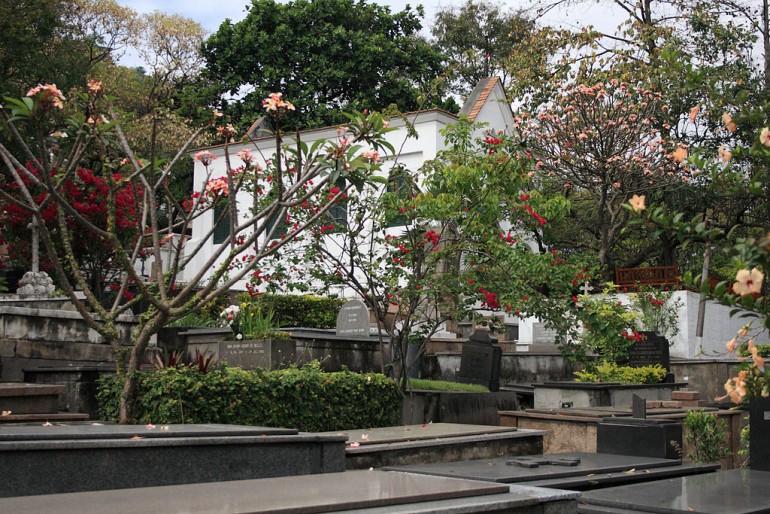Sponsored Listings:
RIO DE JANEIRO, BRAZIL – Situated around twenty minutes ride away on the VLT from central Rio’s Cinelândia station, the ‘Cemitério dos Ingleses’ (English Cemetery) in Gamboa is a true hidden gem that holds many fascinating stories about British-Brazilian interactions throughout the city’s history. Here’s why it’s well worth a visit, and how to get there.
Chris Hieatt, Honorary Treasurer of the cemetery, has been involved in its running for sixteen years. “The best way to get to the cemetery is either a taxi via Presidential Vargas, Central railway station, and then Gamboa tunnel, or via Tunel Santa Barbara and Santo Cristo. You can also catch the metro to Cinelândia and VLT to Gamboa.” He says. Once there, the cemetery presents itself like a typical English parish churchyard patched onto a distinctly carioca hillside.
As Hieatt previously wrote in The Rio Times, the oldest favela community in Rio, Morro da Providência, is now built around the boundaries of the cemetery. It is a juxtaposition that is typical of the city. The infamous ‘Teleférico da Providência’ (Providência Cable Car) can even be seen from the grounds.
With around 2,000 graves, marked and unmarked, there are plenty of remarkable stories held within the cemetery. Hieatt comments, “One of the more distinguished officers of the British Navy buried in the English Cemetery at Gamboa is Sir Michael Seymour, 1st Baronet, KCB.”
He continues, “After a long career in the navy, he became Commissioner of Portsmouth Dockyard, but after the post was abolished, was promoted to Rear-Admiral, and appointed to command the South America Station. He received a pension of £300 for the loss of his arm.”
“He was buried at the English Cemetery in Gamboa in a large funeral attended by English, French, American and Spanish officers, and other civilian officials. As a gesture of respect, the national flags on the ships in the harbour were flown at half-mast, and salutes were fired. A memorial was later erected in his memory at St Ann’s Church, Portsmouth.”

The cemetery also tells another little-known British cameo in Brazilian history. Hieatt adds, “Unless you have studied Brazilian military history, you are probably not aware of the contribution English, Irish, Scottish – and even German – officers, seamen and soldiers made to the successful Independence of Brazil.”
“Everyone has heard of Lord Cochrane, who is buried in Westminster Abbey, but has a monument in the English Cemetery. Other officers died in Brazil and are buried there.” Between the years of 1830 to 1840, Brazil had at least five different regional rebellions that were all successfully put down with the help from an often British-led Brazilian navy.
“The Brazilian Navy was prominent in the suppression of all of these outbreaks, as were its remaining British officers. Captain William James Inglis and Lieutenant Richard Norbert Murphy were killed during the bloody ‘Cabanos’ rebellion in Pará. Commodore John Taylor (Grave 1421/1) led the force which restored order, assisted by Captains William Eyre (Grave 1077) George Manson and Bartholomew Hayden (Grave 324/5).”
He adds, “In the south, it was Commodore John Pascoe Grenfell who suppressed the ‘Farrapos’ rebellion, with Captains William Parker, Richard Hayden and George Broom (Grave 1743/1) under his command.”
The cemetery also holds the graves of prominent Brazilian journalist and playwright Mauro Rasi, and British Ambassador Sir George Dixon Grahame. However, maintaining such a plot of land isn’t easy, and Hieatt is currently overseeing some major renovations to the site.
“The landscaping project includes new electric installations, improvements to the drainage, cutting and planting trees, building a ramp from the gate over the current steps, restoring the pathways and generally making the cemetery greener.” The cemetery is always happy to accept donations and to help with burial inquiries, which are now open to all nationalities and are considerably cheaper than Brazilian cemeteries.
Source: riotimesonline.com










